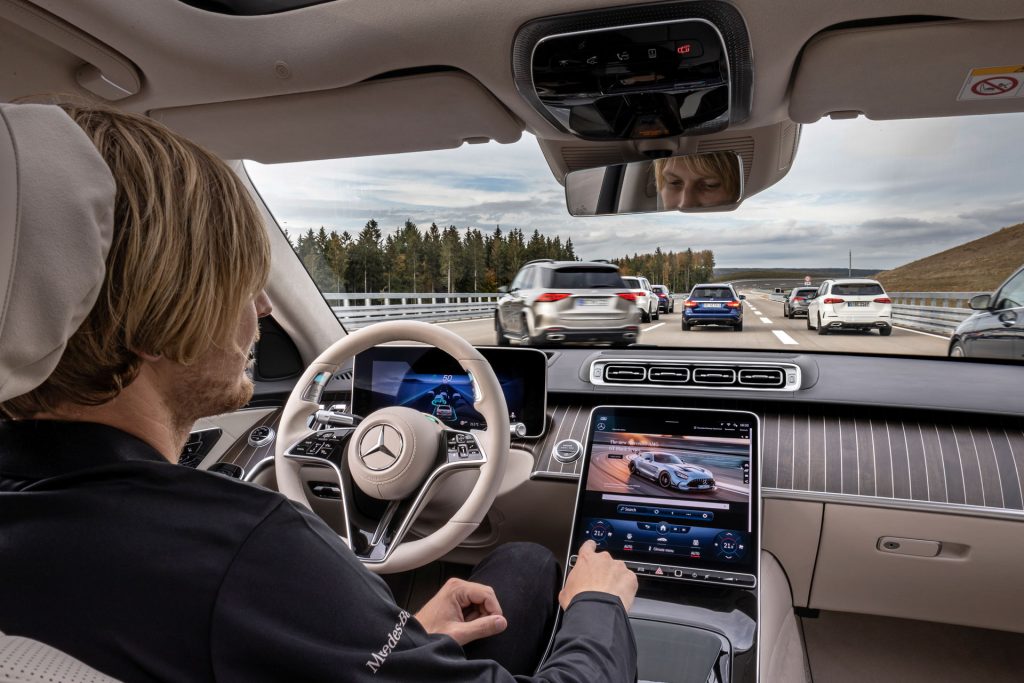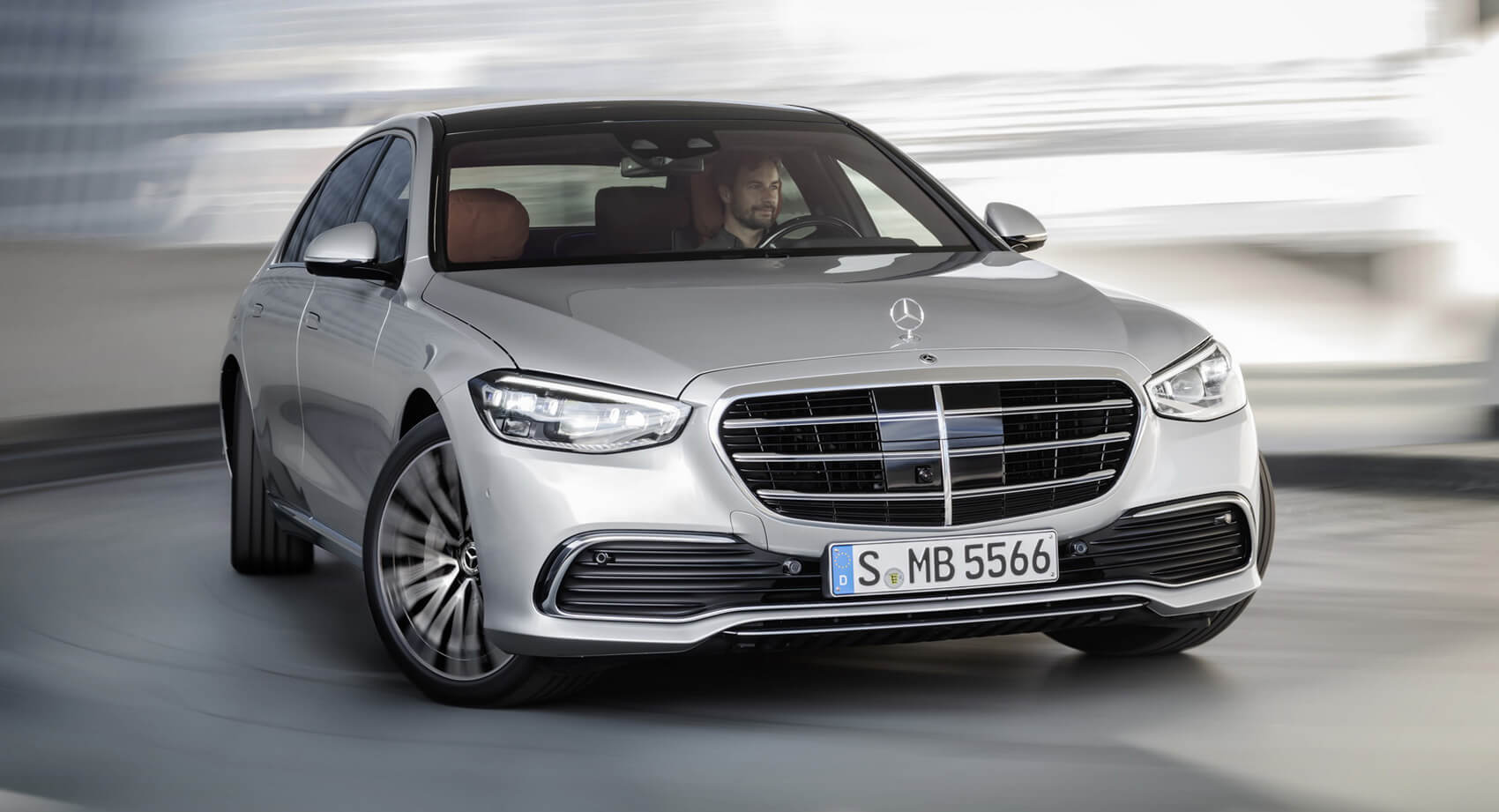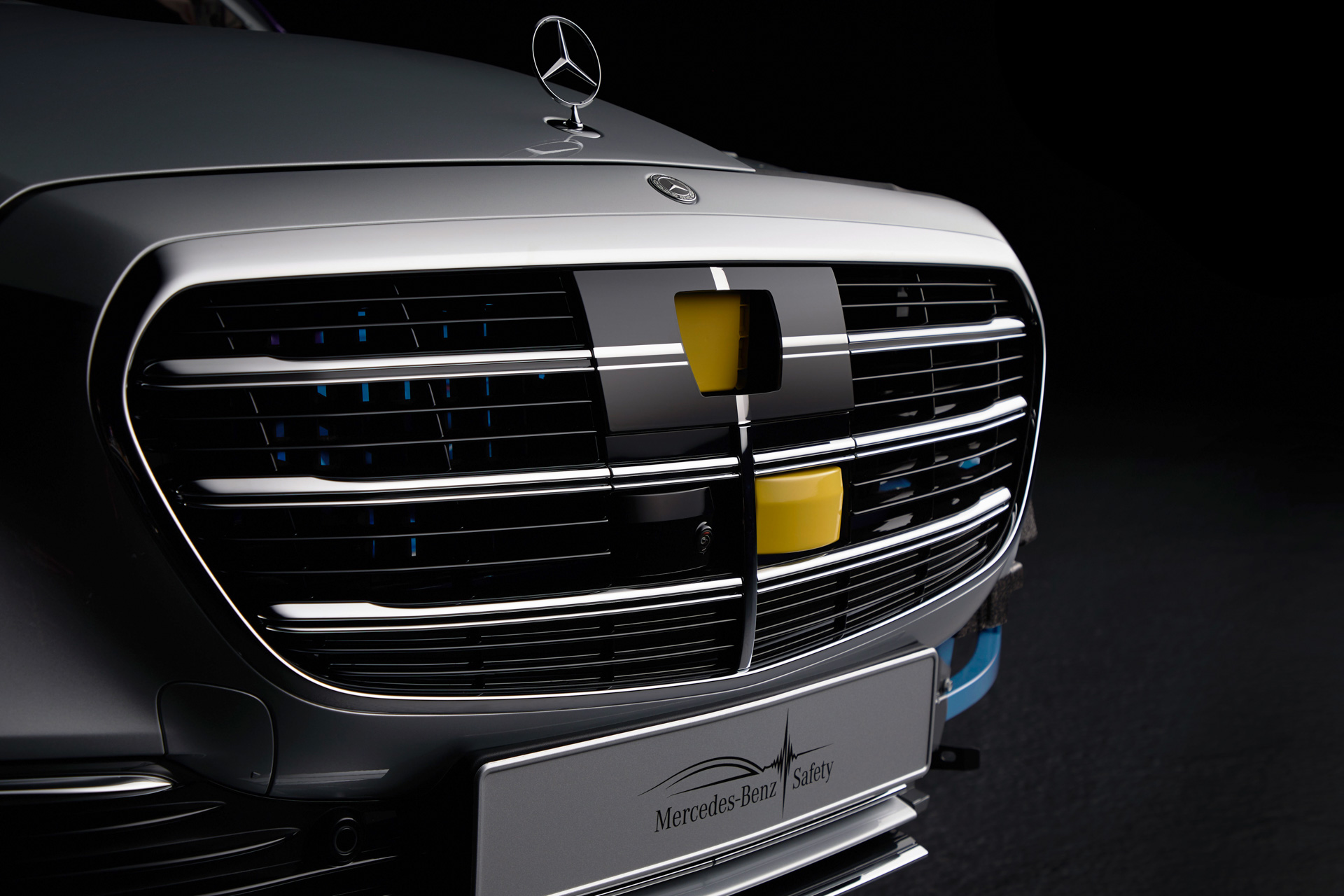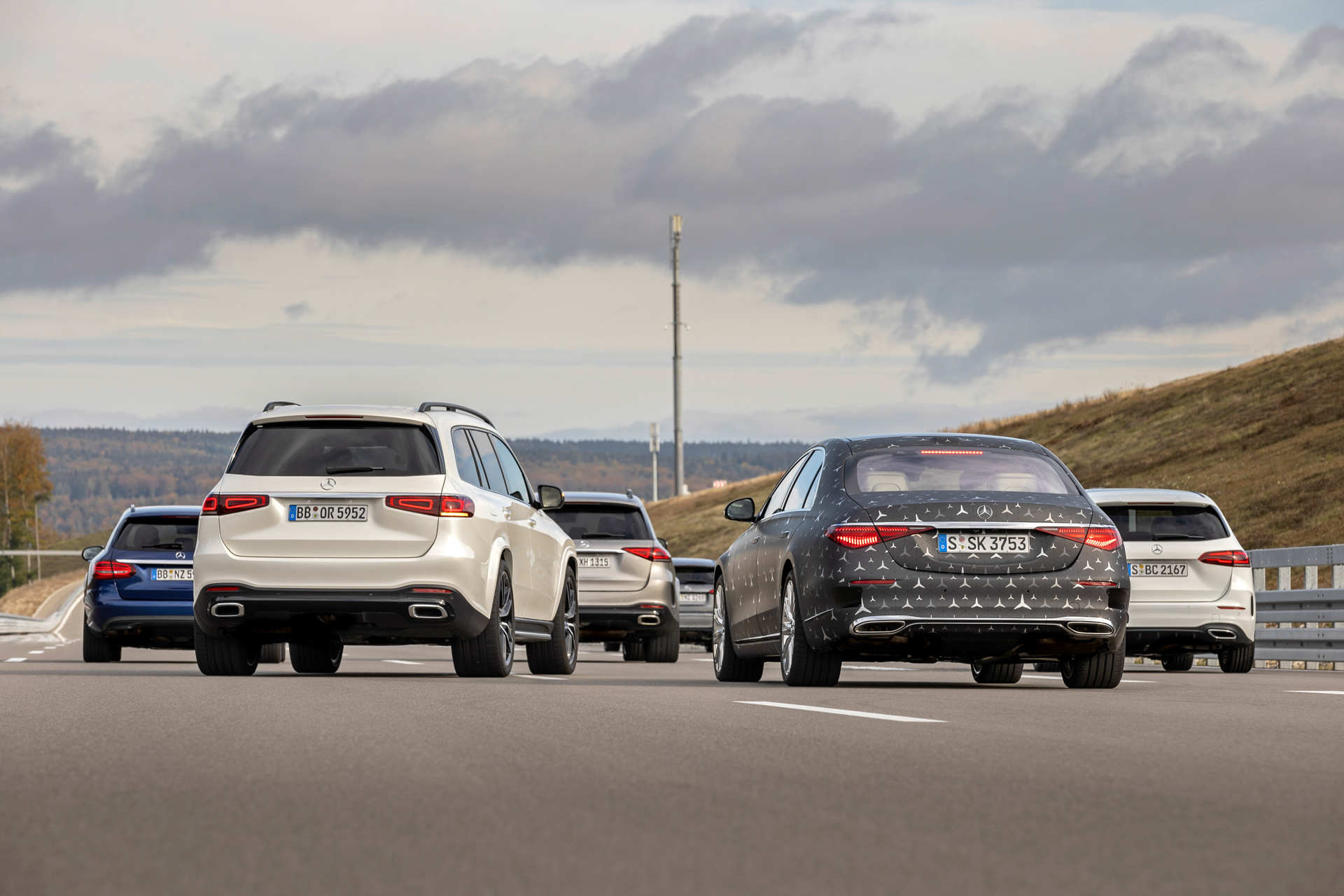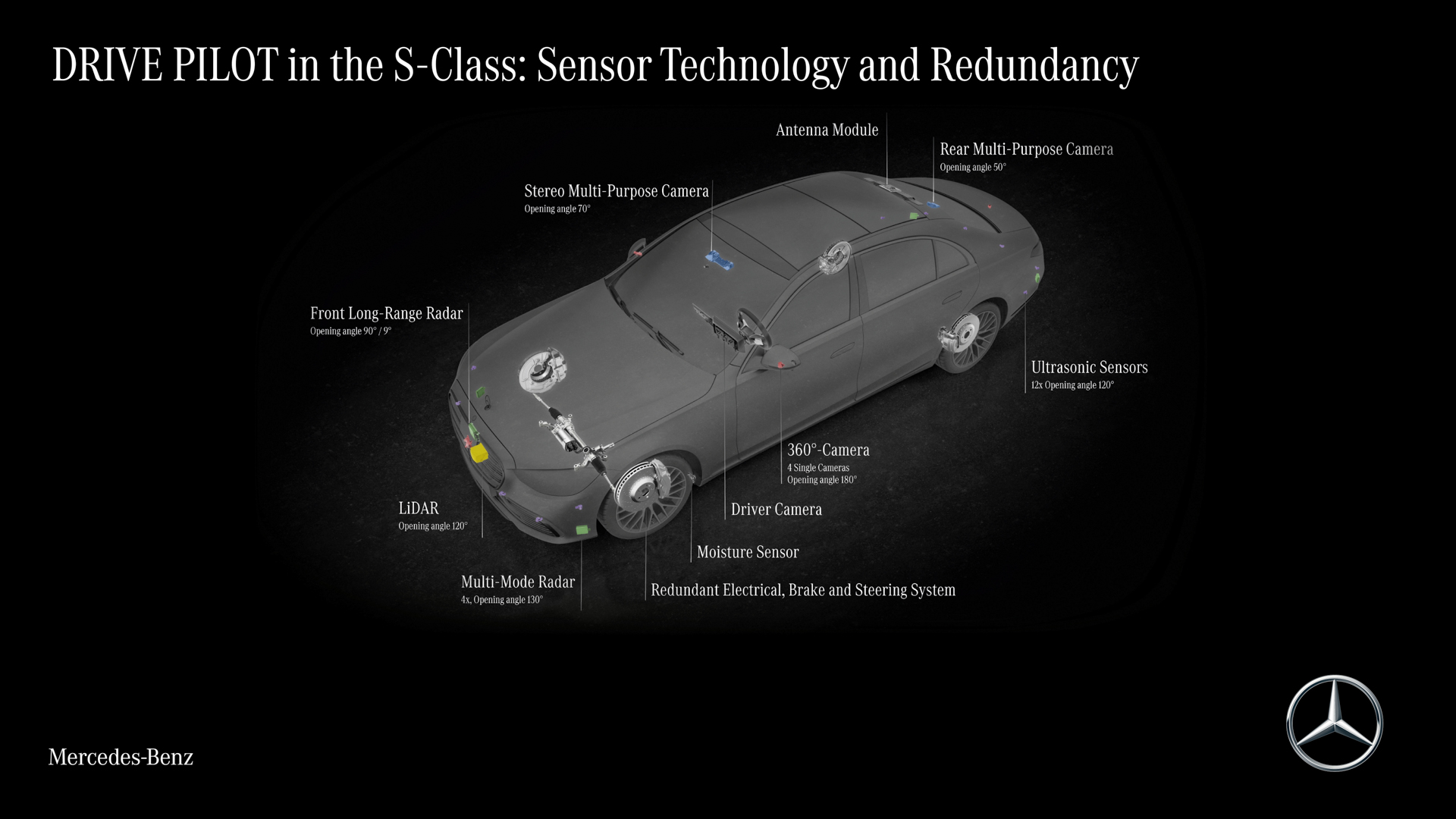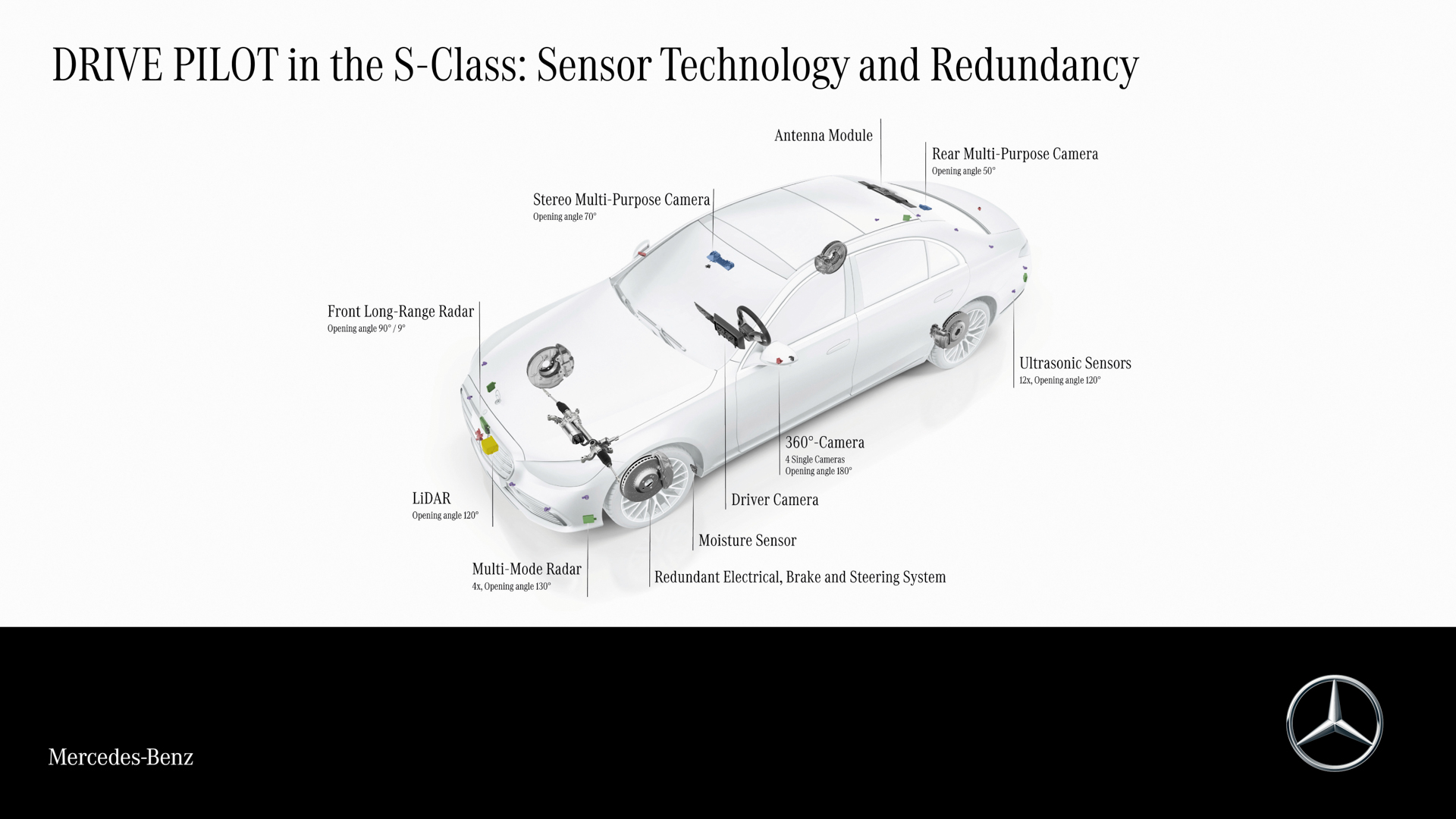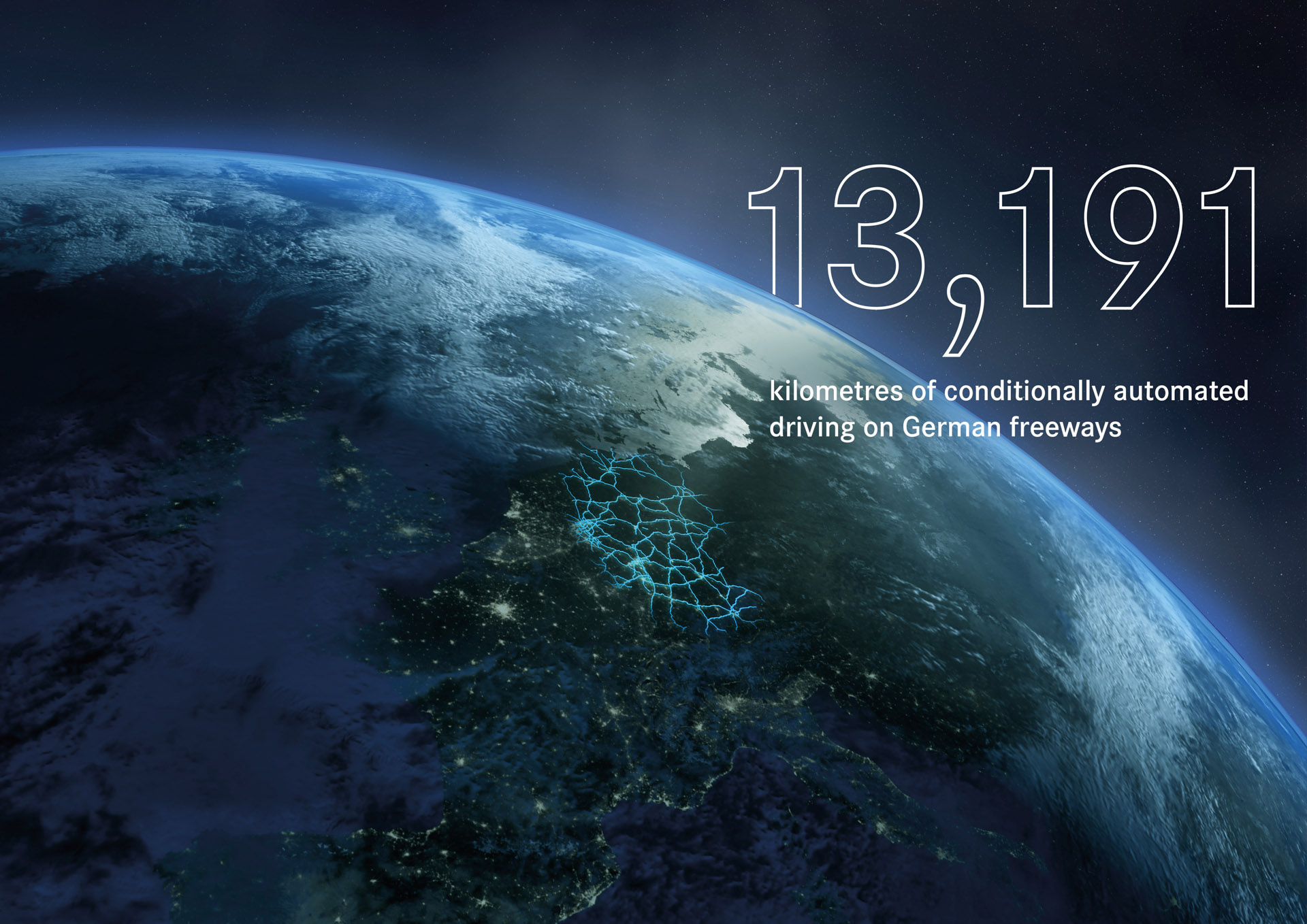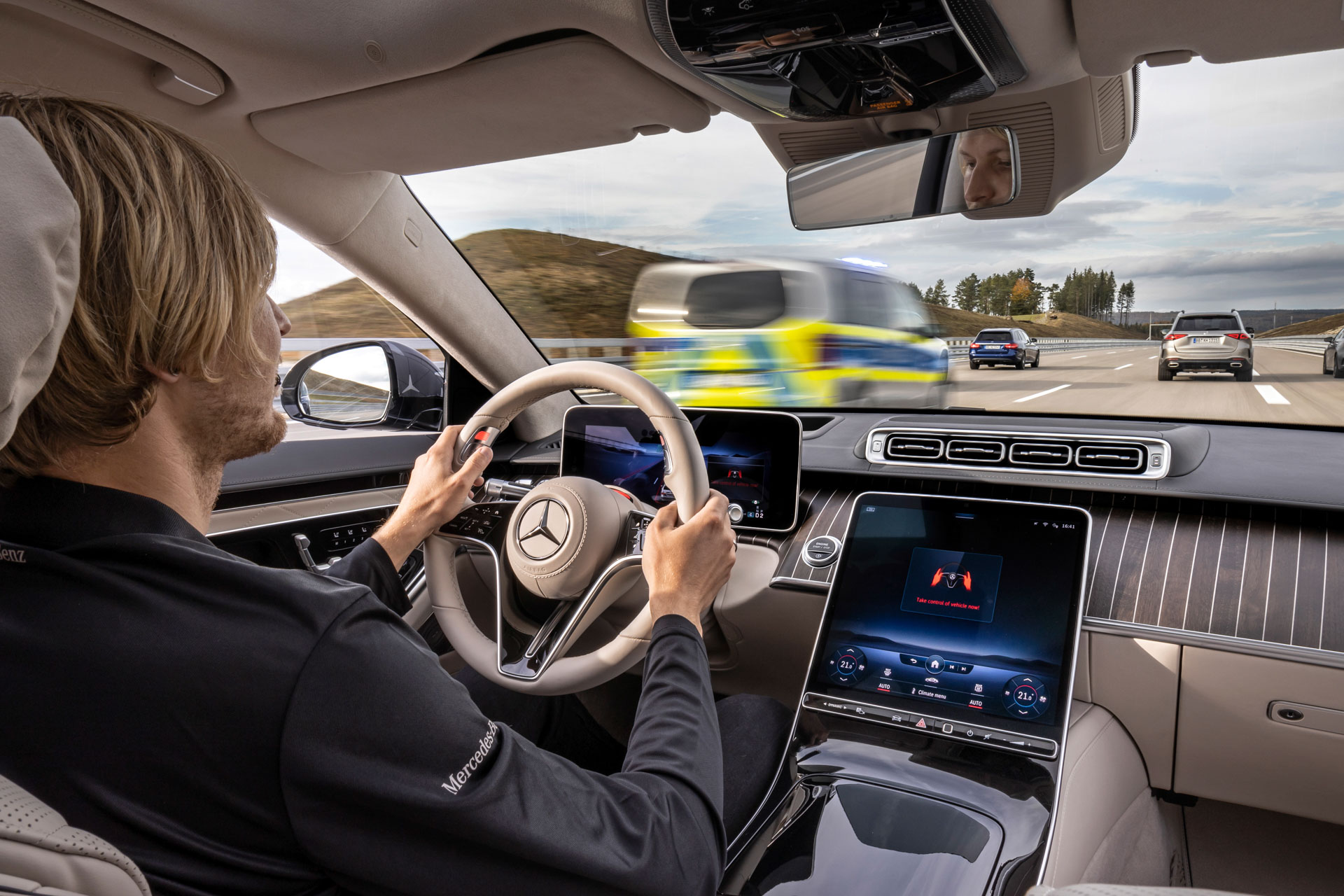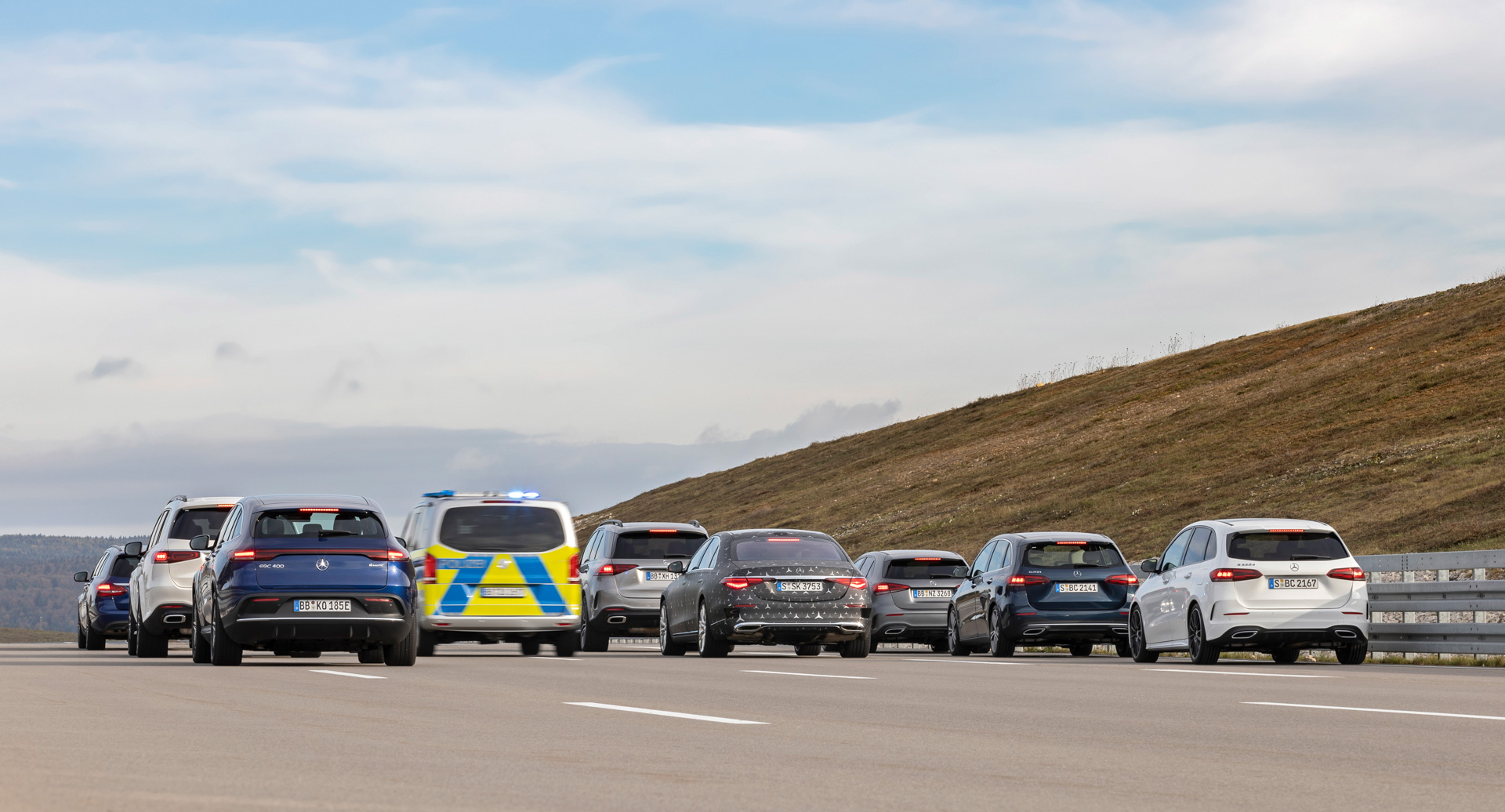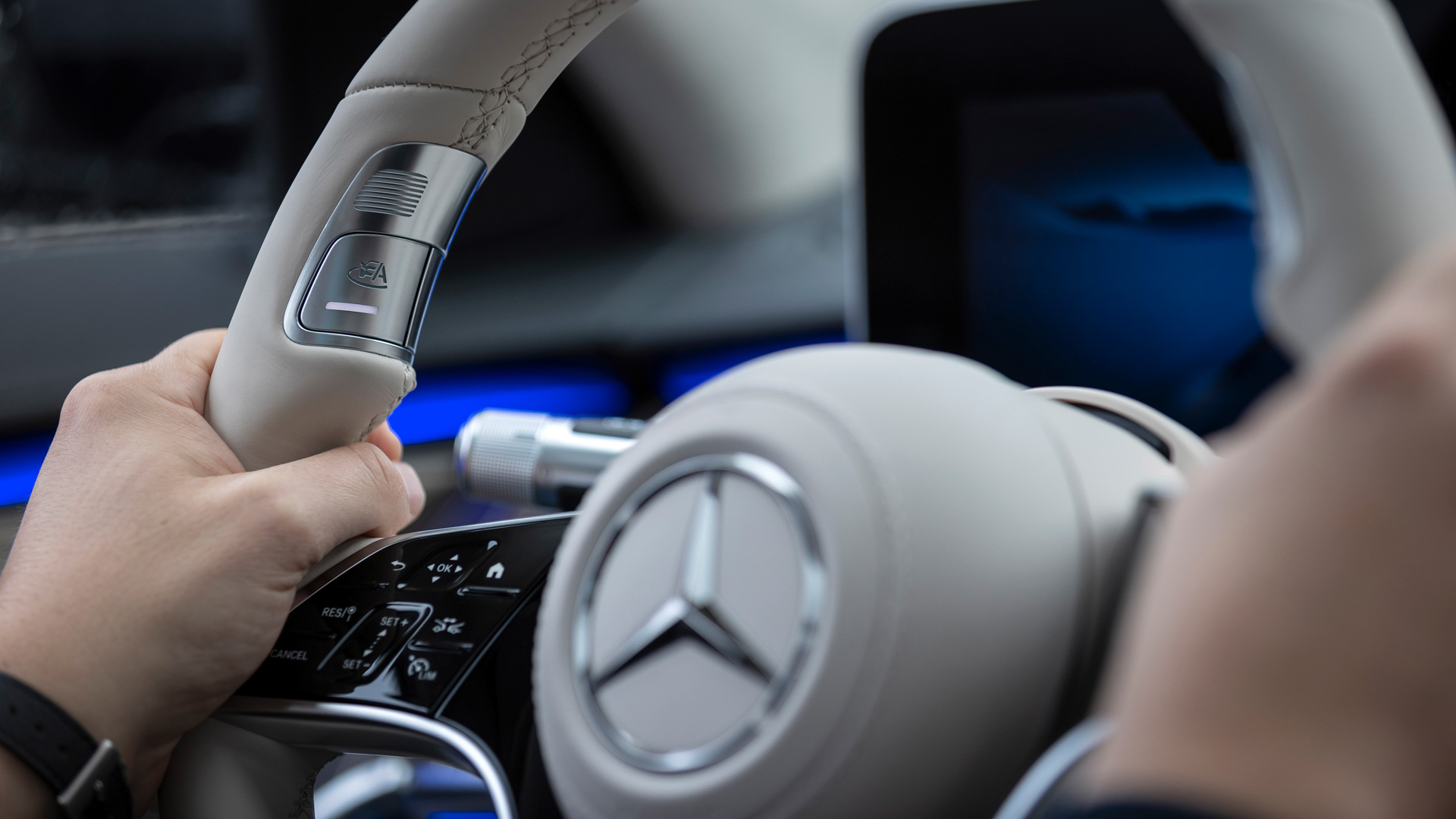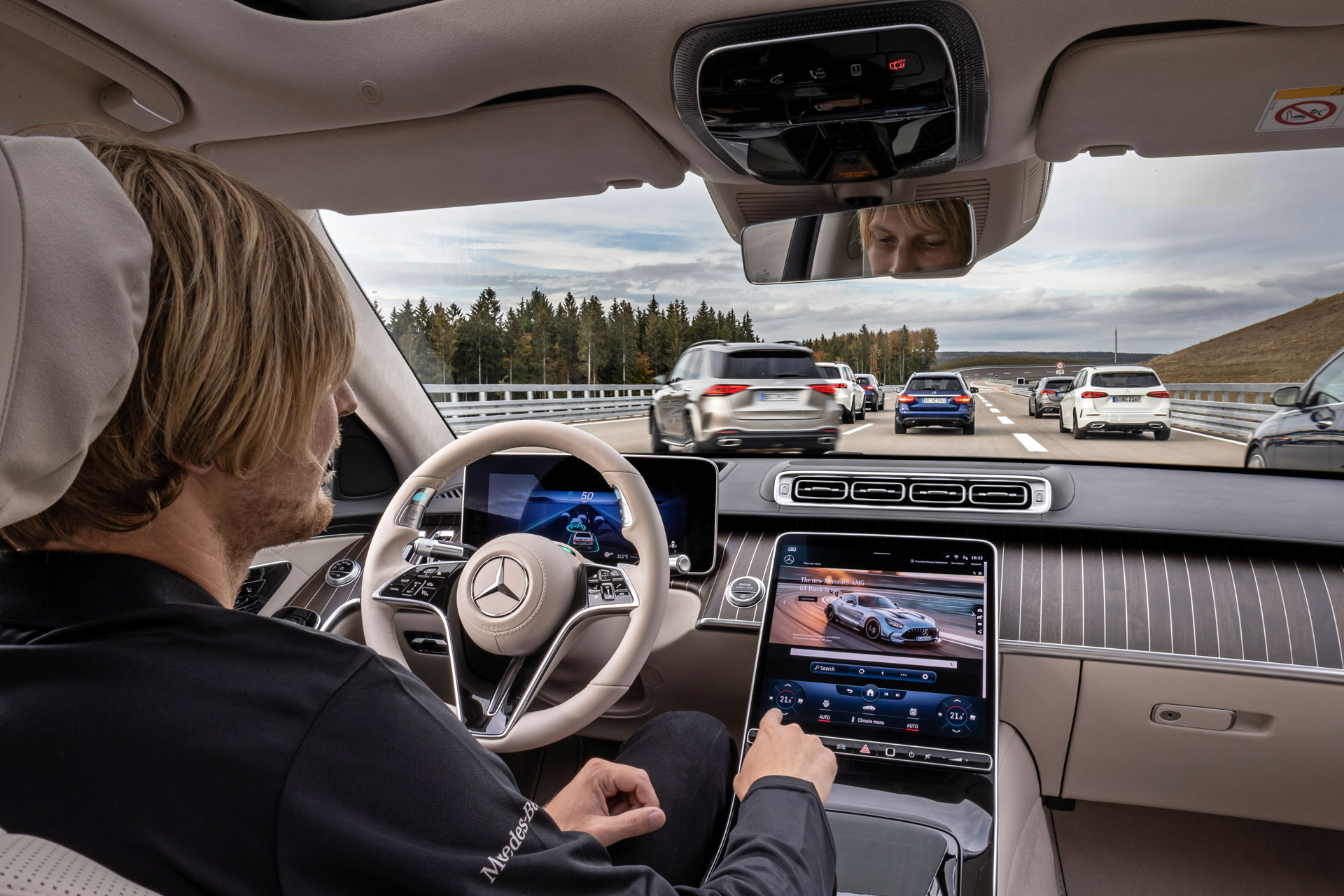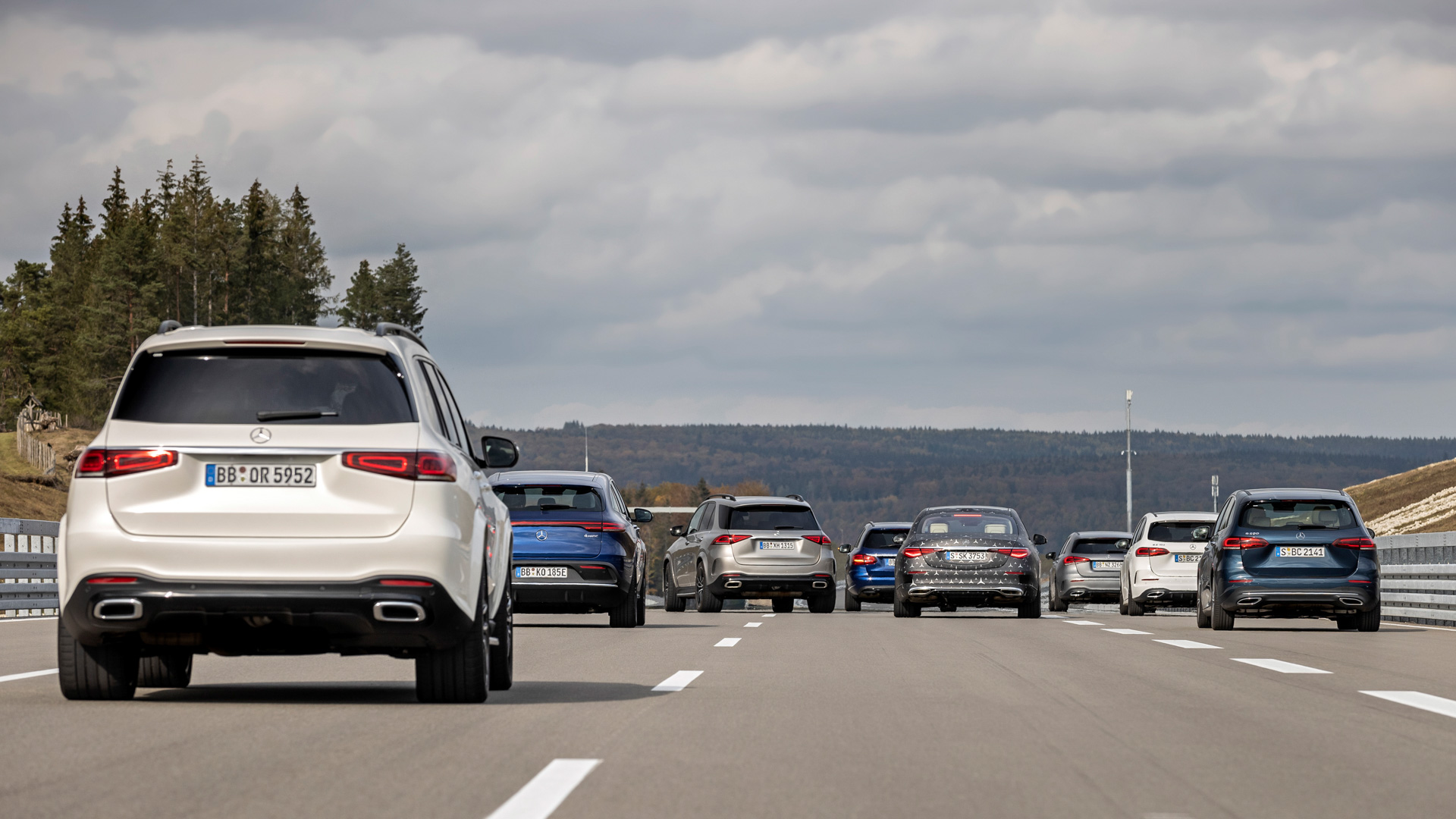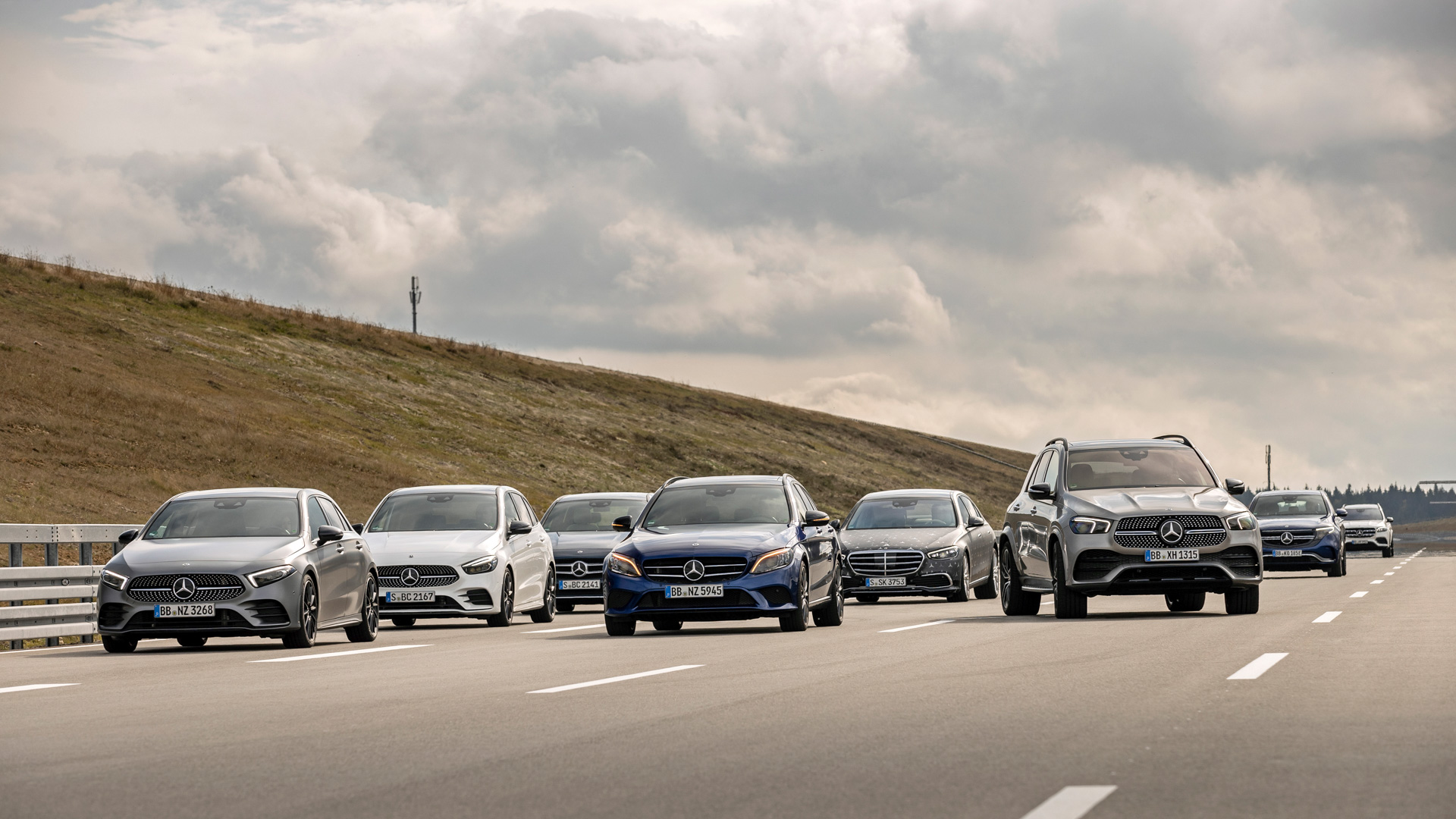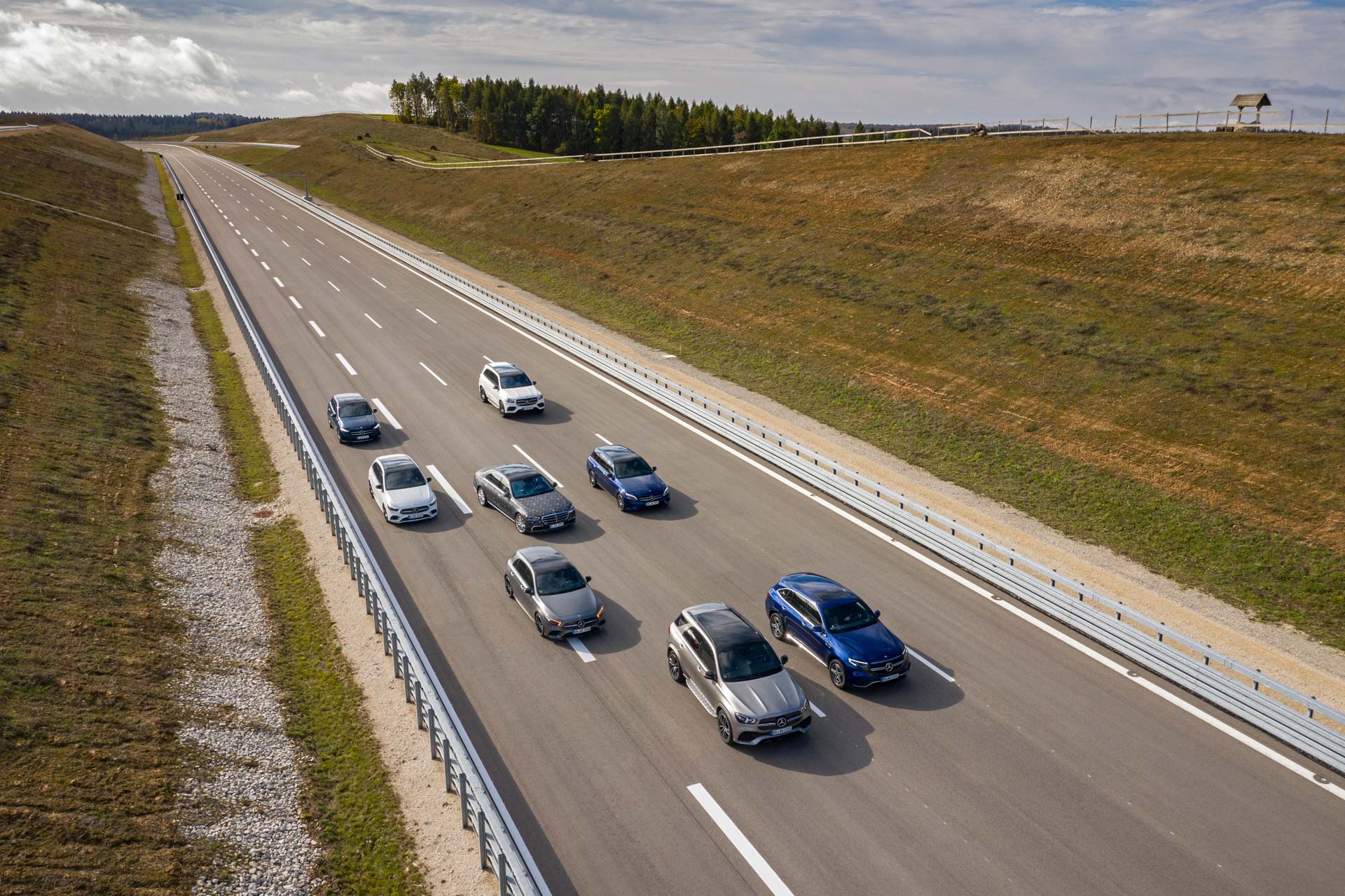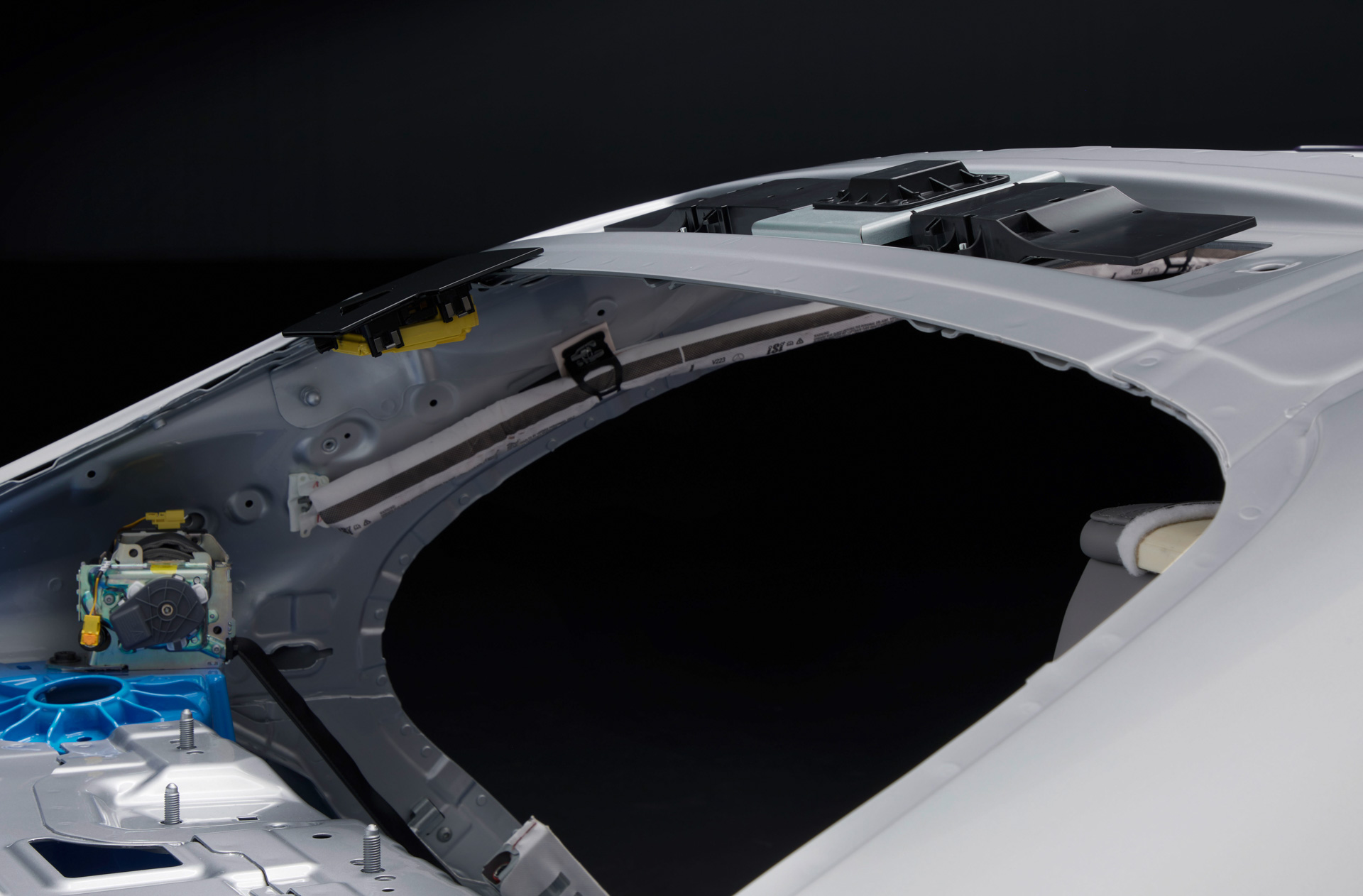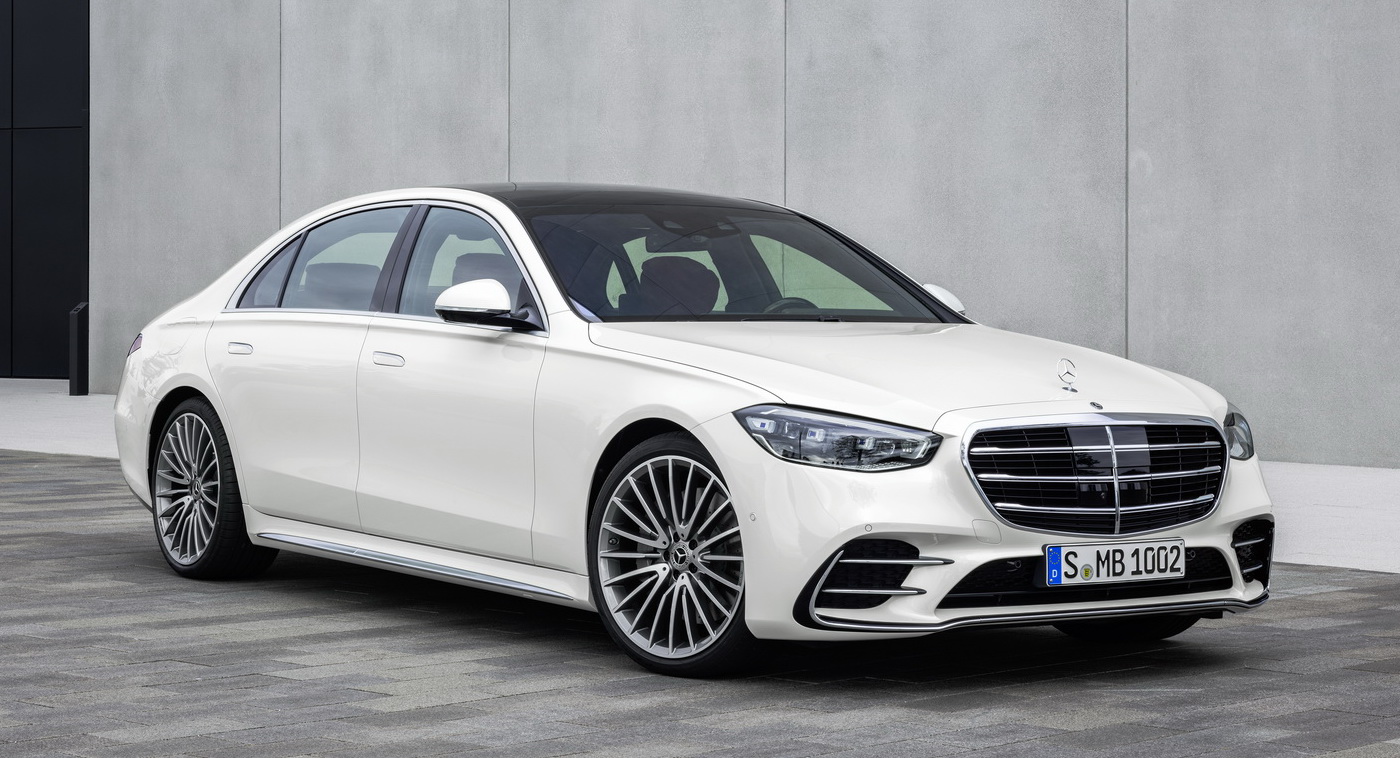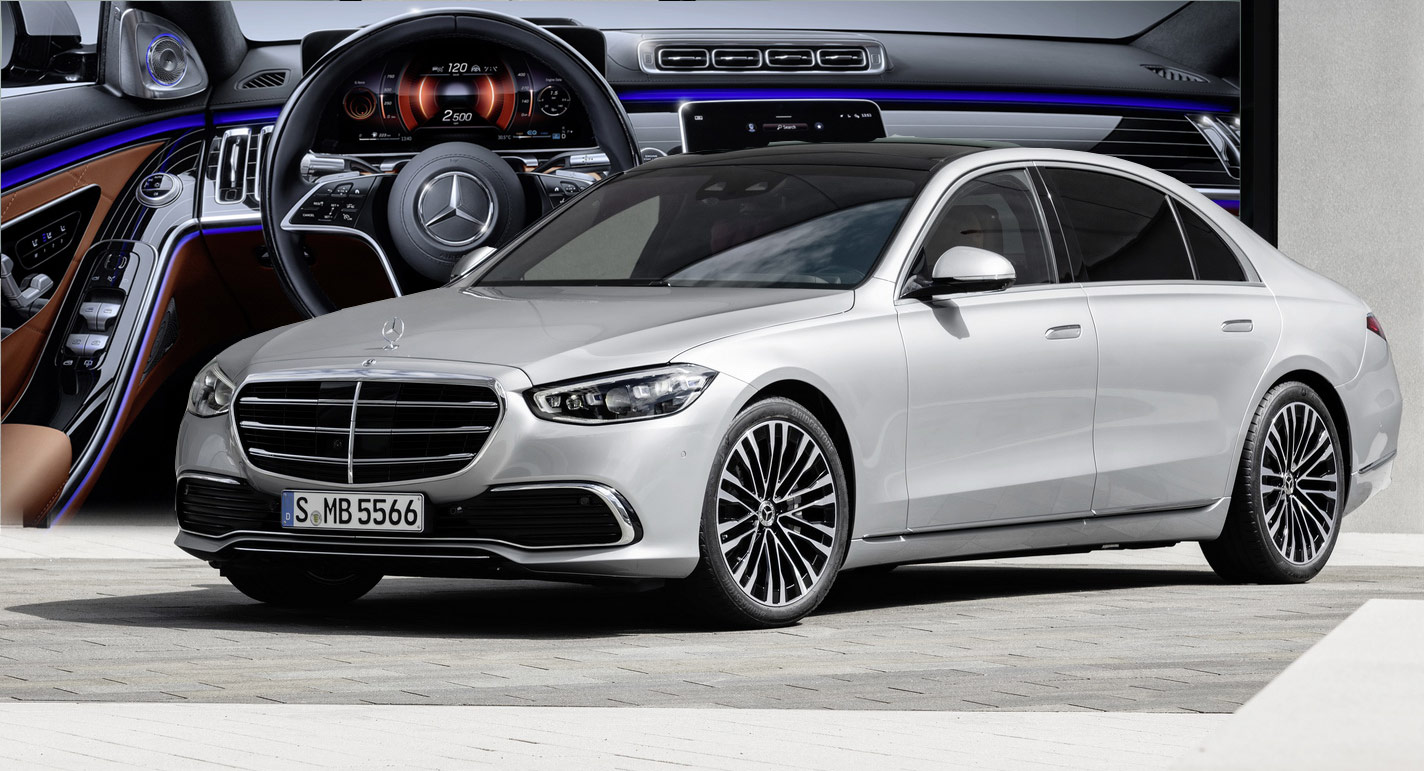Say goodbye to boring traffic snarl ups and hello to rinsing every last drop from your Netflix subscription. Mercedes is the first company to be granted full legal approval for a production car that allows genuine hands-free driving, enabling the driver to kick back and watch a movie or work on that Powerpoint before arriving at the office. And you’ll be able to experience it in the S-Class sedan from early 2022.
Only In Germany, For Now
You’ll be able to experience it in Germany, we should say, because it’s the German Federal Motor Transport Authority that has granted approval for the Level 3 autonomous Drive Pilot system fitted to the luxury sedan. But testing is underway in other countries, including China and the U.S., and as soon as legislation allows in those markets it will be rolled out around the globe.
Mercedes unveiled Drive Pilot when it launched the current S-Class in 2020, and we had a brief chance to try it on a Mercedes test track. But so far no S-class buyers have been able to experience it for themselves because Mercedes still had to jump through some legal hoops.
When people are routinely filmed sitting in the back seat of their Tesla on the freeway, and hundreds of people are cruising around entire cities without laying a finger on the wheel courtesy of Tesla’s FSD Beta, it can get confusing to understand what’s so special about a Mercedes system that only operates on certain stretches of Germany’s Autobahn network, and only up to 60 km/h (37 mph).
What Do Autonomous Levels Mean?
The official explanation is that Mercedes is the first company to offer a car that has been officially recognised as having Level 3 autonomous capability. To make cars’ capabilities easier to understand, autonomous systems are ranked from 0-5, zero being no driving assistance, and 5 being totally autonomous, which would allow the driver to punch in an address and let the car do everything else.
Right now every other car claiming to have advanced autonomous features is currently only at Level 2 at the most, which means the car can stop steer and brake in certain conditions, but it can’t perform lane changes indecently and the driver can’t remove his hands from the wheel for extended periods. Level 3 systems, like the Merc’s, can actually monitor the driving environment, steer around hazards and let the driver actually do something else.
And this is the breakthrough. Though in theory the driver needs to be ready to take over in an emergency, this is the first time he or she hasn’t been expected to be paying attention. “Drive Pilot allows the driver to take their mind off the traffic and focus on certain secondary activities, be it communicating with colleagues via In-Car Office, surfing the internet or relaxing while watching a film,” says Mercedes. “In Drive Pilot mode, applications can be enabled on the vehicle’s integrated central display that are otherwise blocked while driving.”
The downside is it only works on Germany’s Autobahns, and at relatively low speeds. So it’ll be great for taking the sting out of morning traffic jams and snarl ups caused by accidents, but you can’t set off from your house in the morning in your S-Class and expect the car to do any heavy lifting until you hit the Autobahn, or to cruise along at 85 mph while watching two hours of your favourite Twitch streamer killing it on Rainbow Six Siege.
Tested: How Drive Pilot Works And What It Feels Like
At launch Drive Pilot will function on 8,197 miles (13,191 km) of Germany’s motorway network. Unlike Tesla’s purely camera-based autonomous systems, Mercedes uses a combination of LiDAR, long-range radar, cameras front and rear, and navigation data on the S-Class to read both the road and the traffic situation. It has a microphone to listen out for emergency vehicles and even has a moisture detector in the wheel well to monitor the road surface and sense low-grip situations.
Related: 2023 BMW 7-Series Will Get Level 3 Autonomy Next Year, But Not In The U.S.
The system relies on sophisticated GPS mapping data that’s way beyond what’s fitted to regular sat nav-equipped cars. That creates a three-dimensional image of the environment, which is stored both on the car and in a data center, and is constantly updated. The hardware adds a little smooth-shaped lump to the rear of the S-Class’s roof, and inside the system is activated by a button set into the steering wheel rim that’s not present in non-Drive Pilot cars.
Customers won’t be able to try Drive Pilot until next year, but we got to see it first hand on a Mercedes test track at the launch of the S-Class last year. Mercedes laid out a demonstration where our S-class was cruising along on a four-lane stretch of “road” with around seven other cars and SUVs, some of whom had been primed to perform certain maneuvers like lane swaps, to see how Drive Pilot would react.
Related: Find Out Why Ford’s BlueCruise Is No Match For Tesla’s Autopilot
Bear in mind that this was over a year ago, and the process of fine tuning was still going on, something I definitely felt was necessary to iron out some of the jerkiness in the S-Class’s reactions. But overall it was seriously impressive. It slowed and sped up to match the rising and falling speeds of the surrounding cars, and braked when another car cut in front of us.
And when one vehicle ahead of us faked a breakdown, Drive Pilot waited until it detected space in the next lane, then pulled effortlessly around the stricken car. At one point on the next lap it suddenly pulled right in its lane, leaving me nonplussed until a V-Class in police livery with its lights flashing cruised through in the gap we’d just created. The S-class had spotted the emergency vehicle before I had.
As is always the case with this kind of technology, it’s currently only available on the S-Class, but will eventually trickle down to the lower models. By the end of the decade it’s likely to be available on fairly ordinary cars, while Mercedes will no doubt be looking to break through to Level 4 autonomy for its flagships cars. We’re still some way off from fully self-driving cars that don’t require us to do anything but bark an address into our smartphone app, but this latest ruling from Germany granting Level 3 certification to the S-Class has certainly taken us one giant step closer.








